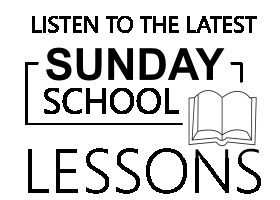Moses is still on top of the mounting getting instruction from God. The people were still at the base of the mountain (perhaps, still seeing the blazing fire of God’s presence). Part of those instructions dealt with worship and the architecture of where the people of Israel will worship.
In the last lesson, we learned about the Ark of the Covenant. God instructed the Ark to have four rings in which the priests would place two poles to carry the Ark (remember the people of Israel were wandering in the desert). The poles were to keep someone from touching the Ark. How do we know this? In 2 Samuel, Uzzah died after he touched the Ark when it was being transported (2 Samuel 6:6-7).
Read Exodus 25:23-30
– What similarities in construction does the Table have with the Ark?
– Discuss why it was fully covered with gold (like the Ark) and had rings for transporting the Table (like the Ark).
– What items were set on the Table? (vs. 29-30)
The “flagons and bowls with which to pour drink offerings” were sacrificial drink offerings of wine (see Numbers 15:5-7 and 28:7). And so we can conclude that the Table was for, not just the bread of the presence, but also the wine of the presence!
In Leviticus, Yahweh told Moses about the bread and frankincense that would be placed on the Table.
“Take the finest flour and bake it into 12 loaves, using two-tenths of an ephah for each loaf. Arrange them in two rows, six to a row, on the pure [gold] table before the Lord. Place pure frankincense near each row that it may be a memorial portion for the bread, an offering by fire to the Lord. This bread is to be set out before the Lord, Sabbath after Sabbath, as an everlasting covenant for the people of Israel. The bread will belong to Aaron and his sons, who are to eat it in a holy place, since it is for him [Aaron] a most holy portion from the offerings by fire to the Lord, his portion forever.” [Leviticus 24:5-9]
– What is the purpose of the frankincense (the frankincense was burned in a memorial to what)?
– If the bread was only bread, why would the frankincense be burned in remembrance of it? Discuss.
Excursus: The Bread of Presence
The Hebrew words, lehem ha panim, literally means “bread the presence” (English requires a word or words between “bread” and “the” to make sense). Based solely on the grammar, Lehem ha panim could have several possible meanings. It could mean–if “presence” refers to God’s presence–that the bread is the “bread before the presence” of God. Grammatically, that is a legitimate understanding, considering that the bread was placed in front of the Holy of Holies, where the cloud of the divine presence was above the Ark of the Covenant.
Lehem ha panim could also mean “bread that is the presence.” Considering that panim is also the Hebrew word for “face,” that is your pastor’s understanding of that term. The bread is the Bread of God’s Presence, that is, His Face. Here’s why.
God commanded the Table of Presence to be carried the same way the Ark was to be carried. Priests carried the Ark using two poles, which allowed it to be transported without having to touch it. The Ark was transported that way because that was where God was present with His people; it was holy and not to be defiled. It makes no sense for God to have the priests transport the Table in the same way as the Ark if the Table did not also have, in some form, God’s “real presence.” Like the Ark, God then was also present on the Table. God’s commanded mode of transport for the Table testified to that reality. This means that the bread on the Table was not merely symbolic of God’s presence above the Ark.
Even more, the Table had to be covered when transporting it, like the Ark was also covered. The bread was also transported with the Table while covered with a blue cloth (Numbers 4:1-8). For the bread to be treated in such a way, where the only way for it not to be on the Table was for the priests to eat it (and not thrown away) shows that God somehow made the bread special.
The frankincense was burned as a memorial (in remembrance) of the bread on the Table. That’s an unusual mandate from God to burn frankincense as a memorial if it was only bread. However, if God were present in the bread, then it makes perfect sense to burn frankincense to remember and testify to that reality. In other words, it makes more sense that the burning frankincense testified to the presence of God being there on the Table, instead of testifying only to the bread, which, in turn, then testified to God’s presence above the Ark.
God also commanded Moses that all Israelite men were take part in the three feasts a year: Passover, Pentecost, and Tabernacles (this did not imply that others in the family were not to attend, but men were specifically to attend). Most of our translations say that during the festivals the men were to “appear before God.” A more-literal translation of the Hebrew reads: “Three times a year all your men are to see the face of the Lord God, the God of Israel” (Exodus 34:23, 23:17). The Hebrew word for the “face” of God is panim, the same word used for the “Bread of the Presence” or “Bread of the Face” (Exodus 25:30). During these three festivals, the priests would show to the people the bread of the presence. By showing the bread of the panim, the priests were fulfilling the Law for the people to “see the face” of the Lord. For that to happen, God had to present, in some way, in the bread!
Leviticus 24:5-9 stated that the Bread of the Presence was to be set before the LORD as “as an everlasting covenant” between God and Israel. That covenantal relationship was established through the sacrificially shed blood at the foot of Mount Sinai (Exodus 24:8). That’s why there were 12 loaves of bread, one for each of the twelve tribes. The Bread of the Presence was “to be set out before the Lord, Sabbath after Sabbath, as an everlasting covenant.” It was to be a continuing sign that, when the Israelites would no longer be at Mount Sinai, God was still with them, not just above the Ark, but also in the Bread of [God’s] Presence.
The New Covenant also has God’s presence on a Table: Jesus’ body and blood in bread and wine, the same items that were on the Old-Covenant Table of Presence! The Table of the Presence, as part of God’s everlasting covenant with His people, continues to live on in its New-Covenant fulfillment: The Lord’s Supper.
In the Old Covenant, only the priests were allowed to eat the bread and drink the wine that was on the Table of Presence. In the New Covenant, however, that Table is open to all who are brought into the New Covenant, for all in the New Covenant have been brought into God’s holy and royal priesthood (1 Peter 2:5,9). The Old-Covenant Table had burning frankincense as a memorial (to remember, in remembrance of) the bread of God’s presence; the Lord’s Supper is also done in remembrance of Jesus, who is present on His Table in His body and blood to be eaten and drunk by His New-Covenant priests.
————–
2 Corinthians 2:14-15: But thanks be to God, who always leads us in triumphal procession in Christ, and makes known through us the sweet aroma of the knowledge of Him in every place. For we are the pleasing aroma of Christ to God among those who are being saved and among those who are perishing.
– Connect Jesus with frankincense and how He makes us smell “sweet” to God the Father.
– Discuss then what frankincense would symbolize in the New Covenant’s fulfillment of the Old Covenant.
Putting It Together So Far …
Click here to go to Lesson 22.




